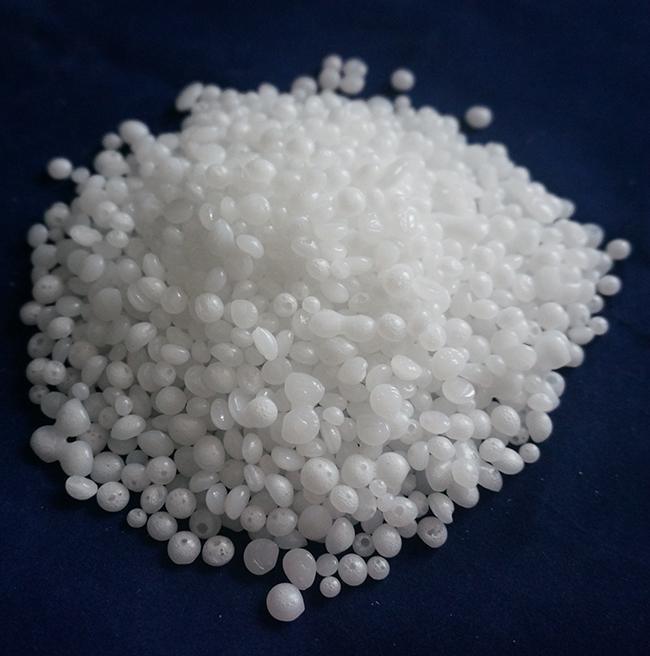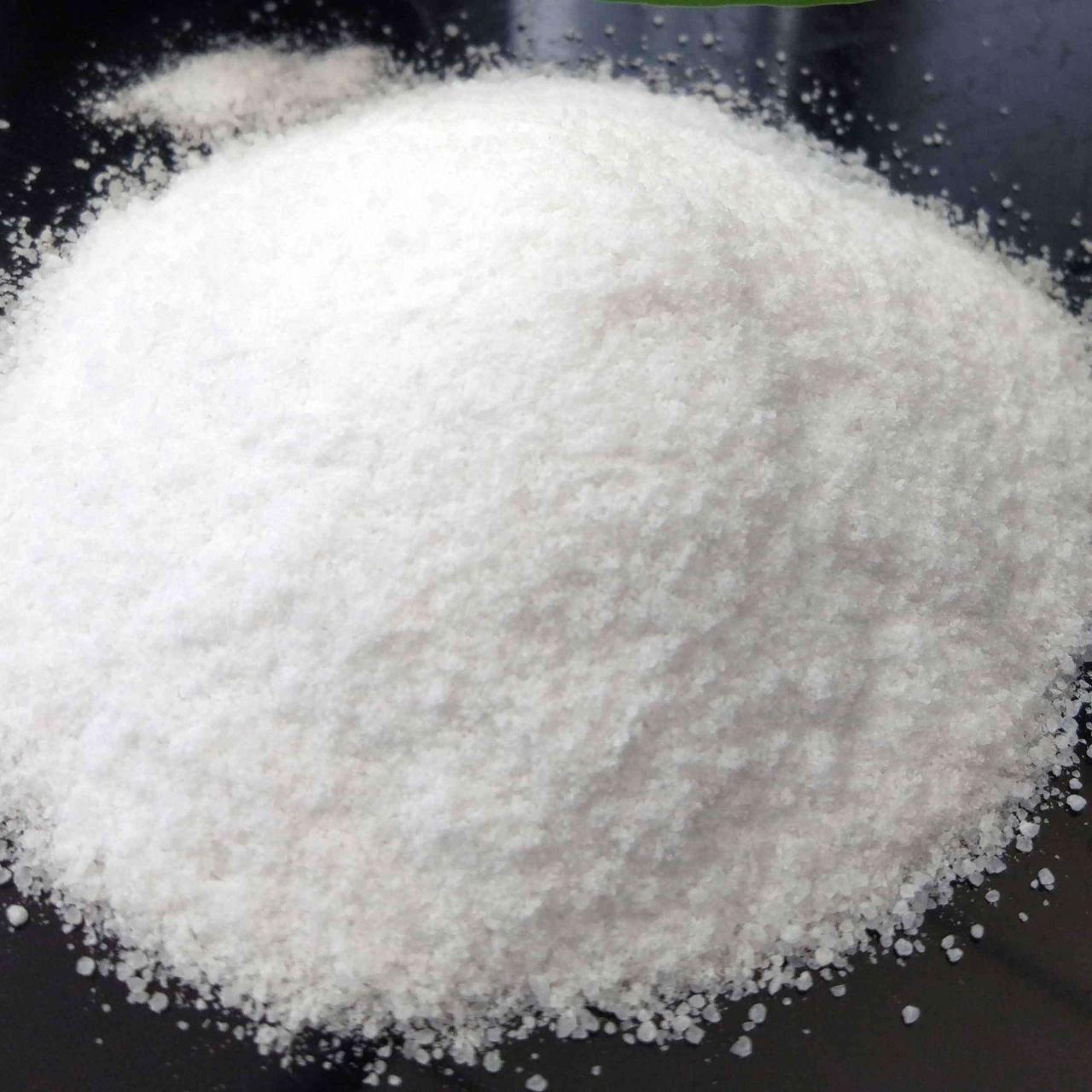Polyethylene wax (PEW) is a polyolefin synthetic wax, generally referring to homopolyethylene with a relative molecular weight less than 10,000, in a broad sense Ethylene polymers that have poor strength and toughness and cannot be processed as a single material can be called polyethylene wax. Polyethylene wax has a high softening point, low melt viscosity, good chemical stability, and good lubricity and fluidity. As a processing aid, it is widely used in PVC pipes, films, cables and other plastic rubber products to improve the processing performance of the products. And at the same time improve the appearance of the finished product.
Preparation method of polyethylene wax
There are three main methods for synthesizing polyethylene wax:
The first is the polyethylene cracking method, which cracks polyethylene resin into low molecular weight polyethylene wax at high temperature.
The second method is a by-product refining method, which collects low-molecular-weight component by-products produced during the ethylene polymerization production process and purifies them to obtain polyethylene wax.
The third method is the ethylene synthesis method, which uses ethylene as raw material to directly synthesize polyethylene wax. According to its polymerization mechanism and the type of catalyst used, it can be divided into Free radical polymerization, Ziegler-Natta (Z-N) catalyzed polymerization, metallocene catalyzed polymerization, etc.

Preparation of polyethylene wax by pyrolysis method
The cracking method is the main method for producing polyethylene wax in China. High molecular weight pure polyethylene or waste polyethylene plastic is cracked into polyethylene wax at high temperature. The product quality is And properties (such as hardness, melting point and apparent color, etc.) are greatly affected by the source of cracking raw materials. The cracking method has a relatively simple process, rich sources of raw materials, and low operating costs. It can reuse waste polyethylene and has good economic benefits. However, the cracking process is difficult to control, the molecular weight distribution of the product is wide, the quality of polyethylene wax is difficult to control, and black spots are often produced. It is more popular in mid-to-low-end applications such as color masterbatch.
Existing cracking processes include thermal cracking, solvent-assisted cracking and catalytic cracking. Among them, thermal cracking is the simplest and can be produced by simply controlling the reaction temperature and time. Polyethylene wax products, but require considerable energy consumption. Xue Ping of Beijing University of Chemical Technology conducted research on the high-temperature cracking of PE resin in a single-screw extruder to prepare polyethylene wax. A heater was added to the connecting pipe between the extruder and the cooling tank to allow the material to be thermally cracked. The optimal cracking temperature is 420°C, which enables continuous production of polyethylene wax by cracking PE resin. Zhang Jianyu and others studied using Al-MCM-48 as a catalyst to catalyze the cracking of waste polyethylene in an autoclave to prepare polyethylene wax. The reaction temperature was 360~380°C and the reaction time was 4 hours. The use of catalysts reduces the reaction activation energy, lowers the temperature required for cracking, and reduces energy consumption. Wang Lulu and others improved the yield of polyethylene wax through solvent-assisted pyrolysis of polyethylene waste plastics, and examined the effects of different solvents and reaction conditions on the yield and performance of wax products. Tests have shown that the use of aromatic hydrocarbon solvents can improve the yield of polyethylene wax. When mixed xylene is used as the solvent, the yield is as high as 87.88%. Aromatic hydrocarbon solvents can also improve product quality to a certain extent, obtaining light yellow polyethylene wax. .

When recycling waste polyolefin plastics to crack to prepare polyethylene wax, various additives in the raw materials, such as fillers and colorants, will cause pungent smell during the cracking process. Odor affects the quality and color of wax. GiseleAzimi et al. explored the use of supercritical fluid extraction (SCFE) method to remove organic and inorganic pollutants carried in polyolefin waste in order to lighten the color of polyethylene wax products, reduce pungent odors, and improve the quality of polyethylene wax. Purpose. Experiments show that under appropriate parameters, the organic extraction rate of polyethylene wax reaches 80%, and the stepless extraction rate is 91% for calcium salt, 69% for sodium salt and 65% for aluminum salt. SEM images show that the extracted polyethylene wax The content of metal particles dropped significantly. After SCFE treatment, the color of the polyethylene wax samples was significantly improved, with an average brightness value increased by 11, and the pungent odor was significantly reduced. As an environmentally friendly and efficient polyethylene wax purification and decolorization process, SCFE can be widely used in the polymer industry to produce high-purity water-white polyethylene wax from recycled polyolefin waste plastics.
By-product recovery polyethylene wax
Collect the by-products of low molecular weight components in the ethylene polymerization production process, and remove the solvent and initiator to obtain polyethylene wax. This polyethylene wax product has complex components, wide molecular weight distribution, poor quality stability, and low molecular weight components are present at the terminal.Combine, use n-hexane and isobutane as solvents, use hydrogen to adjust the molecular weight, the polymerization temperature is 50~90°C, the hydrogen injection amount is less than 10%, the ethylene pressure is less than 10kg/cm2, and the reaction time is more than 30min, the resulting polyethylene wax The weight average molecular weight is 815~15000g/mol, the relative molecular mass distribution is 2.28~5.78, and the melting point range is 118~131℃.
Someone invented a method to manufacture polyethylene wax using a slurry polymerization process, using a supported cyclocene catalyst as the main catalyst and alkyl aluminum as a cocatalyst. Use C2-C4 alkanes as solvents, use hydrogen to adjust the molecular weight, and catalyze the homopolymerization of ethylene or the copolymerization of ethylene and C3-C12 α-olefins at a preferred temperature of 40 to 90°C and a preferred pressure of 1 to 5 MPa to obtain polyethylene wax. The weight average molecular weight of the product is 500~10000g/mol, the relative molecular mass distribution is 1.5~5.0, and the product density is 0.930~0.970g/cm3. This polymerization method is simple and easy to implement, has high polymerization activity, can control the molecular weight and branching degree of the product, and can obtain polyethylene wax with high quality and diversified properties.
Other catalyst polymerization methods
Post-transition metal catalysts represented by nickel and palladium can obtain ethylene polymers with different molecular weights and branched structures by adjusting the catalyst structure and polymerization conditions. Sun Wenhua et al. designed and synthesized a series of imine pyridinium nickel catalysts, using alkylaluminum as the catalyst, under the conditions of polymerization temperature 20~50℃ and polymerization pressure 10atm, to obtain narrowly dispersed highly branched polyethylene wax. Polymerization The highest activity is 5.33×106g(PE)mol(Ni)-1h-1, the weight average molecular weight of the product is 1000~4000g/mol, the relative molecular mass distribution is 1.42~1.92, and the melting point of polyethylene wax ranges from 10~80°C. This polymerization method can synthesize high-purity and high-quality branched polyethylene wax using only ethylene as the monomer. The product quality is stable and the polymerization conditions can be controlled to adjust the melting point of the polyethylene wax. It has broad application in the fields of pigment dispersants and resin lubricants. application prospects.

 微信扫一扫打赏
微信扫一扫打赏

